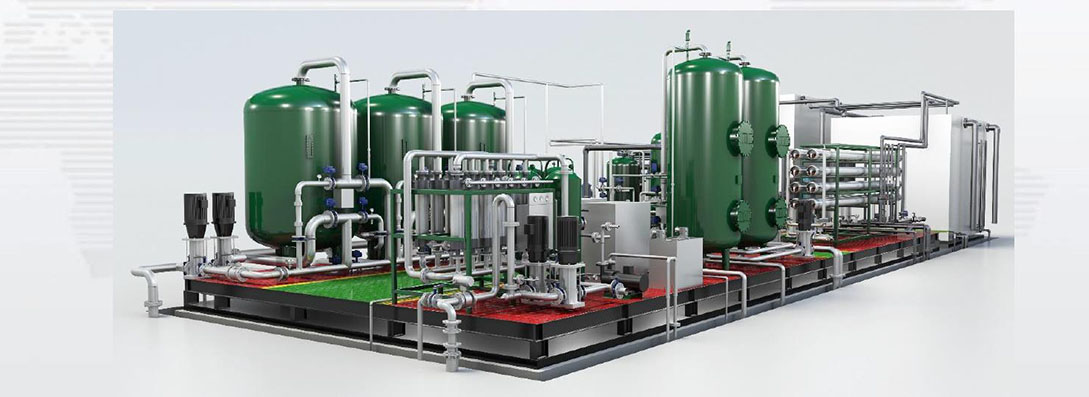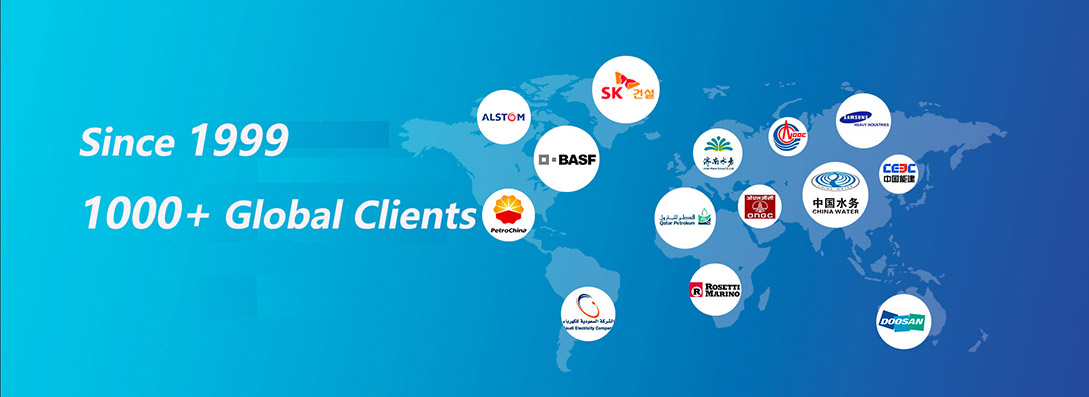Products >> Sodium_Hypochlorite_Generator (Seawater) >> skid mounted electrolysis seawater chlorine production system
Features:
seawater electrolysis technology
compact and reasonable structure
energy-saving operation
convenient operation and maintenance
high operational reliability
long equipment life
ISO, CE

The electrolytic seawater sodium hypochlorite generator uses natural seawater and adopts high-speed electrolysis to prepare high-activity sodium hypochlorite solution on site. The sodium hypochlorite solution is transported to the dosing point as a biocide through dehydrogenation storage, effectively killing microorganisms, sea creatures, algae, and crustaceans in the water body, and preventing the blockage of circulating water pipelines and condenser systems.
The main reaction process of sodium hypochlorite generator electrolysis can be expressed by the following equation:
NaCl+ H2O = NaClO + H2↑
Electrode reaction: anode: 2Cl--2e- → Cl2 cathode: 2H2O + 2e- → H2 + OH-
Solution reaction: 2NaOH + Cl2 → NaCl + NaClO + H2O
System composition:
Application areas:
Technical Parameters
Products Category
- Sodium_Hypochlorite_Generator (Seawater)
- Sodium_Hypochlorite_Generator (Salt Water)
- 15% Sodium_Hypochlorite_Plant
- Strong Alkaline Water generator Machine china
- Ozone Generator
- on site chlorine gas generator china
- Chlorine_Dioxide_Generator
- Chlorine Liquefaction Refill Cylinder Line
- UV sterilization
- Seawater Electro Chlorination System Package China UAE desalination
- Automatic dosing system PAC PAM
- Reverse_osmosis_RO_system seawater desalination system
- Online Chlorine Concentration Meter Gauge
- Sodium Hydroxide Generator detergent caustic soda plant NaOH
- Chlor-alkali plant membrane electrolysis
- Hypochlorous Acid Anolyte Generator
- Medical grade Neutral Anolyte HOCL Generator
- Alkaline ionized water machine
Contact Us

Name: Diana
Tel: +86-15201328666
Mobile: +86-15201328666
E-mail: [email protected]
Skype: +86-15201328666
WeChat: +8615201328666
Whatsapp: +8615201328666
Add: Office N.420D-C1 Tower Ajman,UAE











 Skype Chat
Skype Chat WhatsApp
WhatsApp  Mail inquiry
Mail inquiry
